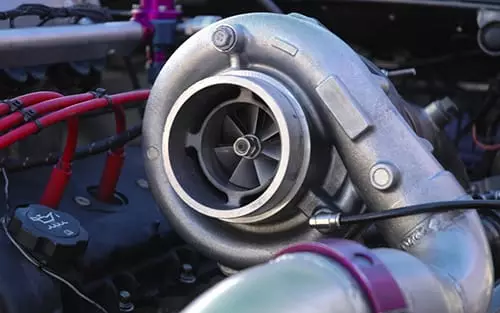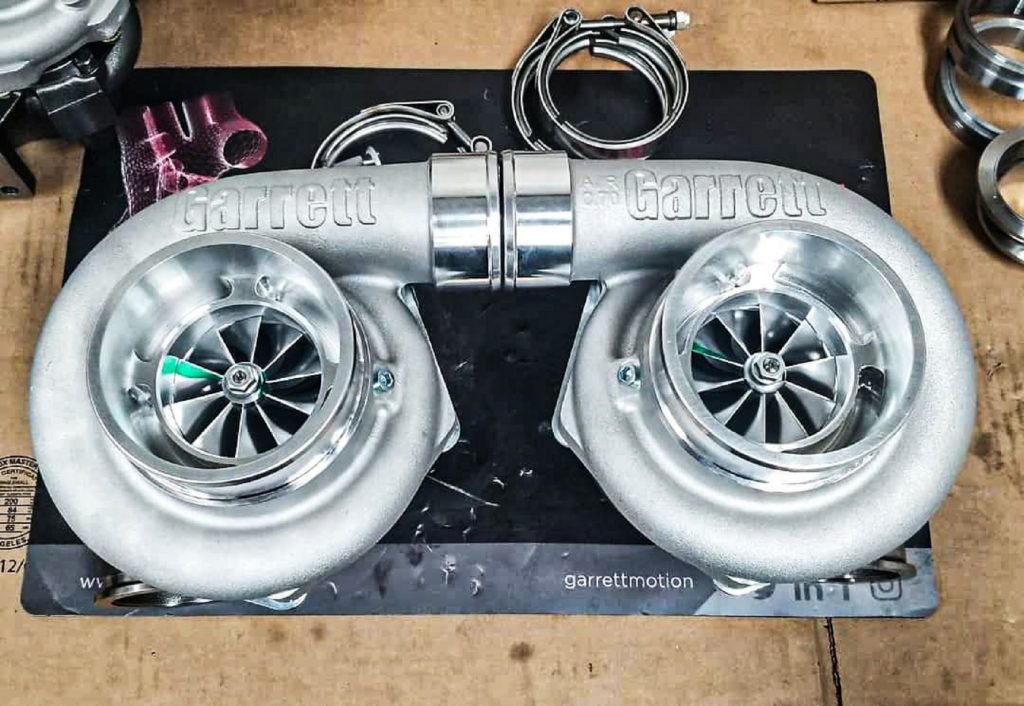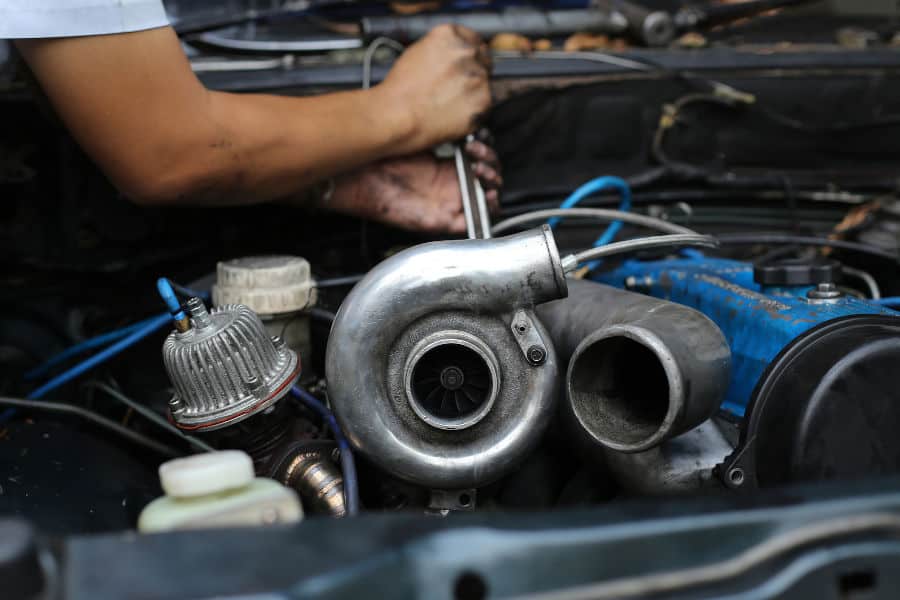How Much Horsepower Does A Turbocharger Add?
By Slyng Team
Updated Jun 15, 2023

Turbochargers have become a popular way to increase the horsepower of an engine. But how much horsepower does a turbocharger add? And is it worth the cost?
Table of Contents

In this blog post, we'll take a look at the effects of turbocharging on engine performance and what you can expect from adding a turbocharger to your car.
What Is A Turbocharger?
A turbocharger is an air compressor that uses the excess power produced by an engine to "force" more oxygen into the combustion chamber. This increases the power output of a car's engine, producing more horsepower without requiring the engine itself to be more significant.
Many trucks, busses, and other large vehicles are powered by engines equipped with turbos. These engines are also found in many sports cars, especially those that produce a lot of horsepowers relative to their size.
How Does A Turbocharger Work?
Turbochargers are relatively simple machines when you get right down to them. They have three essential components:
- A turbine, which takes in exhaust gas from near the rear of the engine block
- A compressor, which compresses clean outside air before sending it back into the intake of the engine
- An impeller or wheel, usually made out of solid metal, actually moves all of this air
The process is reasonably straightforward - exhaust gaseous fuel is sent into the turbine, which spins at very high speeds.
This spinning turbine then sends compressed gas through the compressor, which pushes clean air back into the engine's intake system.
The impellor inside the turbocharger then moves this fresh air around to ensure it gets to where it needs to go.
How Much Horsepower Does A Turbocharger Add?
A turbocharger can add as much as 50% more horsepower to an engine. This is because a turbocharger allows the compressor section of the system to compress air at higher pressures than would otherwise be possible without one. This increased pressure then flows into the piston chambers and other components that require air, which increases power and torque throughout the entire car's powerband - not just at high speeds.

What Are The Advantages Of Adding Turbochargers?
Here are some of the most compelling reasons why car enthusiasts install turbo
Turbochargers Reduce Engine Wear
One of the most significant benefits of adding a turbocharger to your engine is that it reduces wear on fuel-wasting components like valves and pistons.
This is because, at idle or low speeds, the compressor within the turbocharger does not spin - this means no excess pressure in the system with more air output. At higher speeds (significantly when you're accelerating), however, there's more exhaust gas entering the turbine.
This spinning turbine then spins the compressor throughout every stage of an engine's powerband; this ensures that your car always has proper amounts of fresh air available for combustion. In addition, this helps reduce wear on high-mileage engines since it limits the excess heat stress they typically experience during operation. It almost feels like a naturally aspirated engine when you complete a decent twin-turbo engine.
Turbochargers Help Reduce Exhaust Emissions
Another significant benefit of turbocharging is that it helps reduce emissions. In most modern cars, the average exhaust pipe length must always be at least 4 feet.
But when you take out some of the excess gas in the exhaust system with a turbocharger, even in non-turbocharged vehicles, you can make your engine's exhaust pipes shorter.
Shortening an exhaust pipe means less distance for the engine to push hot air through before sending it out into the atmosphere. Reducing this distance decreases how much heat goes into our environment, reducing emissions.
Turbochargers Can Increase MPG Efficiency
Turbochargers are one of the best ways to increase your car's MPG. Once again, this is because it eliminates excess gases in the system by limiting them at low speeds.
This also reduces the amount of work and efficient cold air intake that an engine must do when idling or at low speeds, saving fuel without compromising performance and boosting pressure at the same time.
Turbochargers Increase Horsepower And Torque
Another massive benefit of a turbocharged engine is that it can increase horsepower and torque. This is because, even though a turbocharger takes up some space in your engine bay, it also allows engineers to make engines smaller yet more powerful.
This means you'll have more power and exhaust gases on command at any time you choose to step on the accelerator pedal. In addition, since a compressor requires less fuel than an engine sometimes does (when idling, for example), this further increases MPG efficiency.
Turbochargers Can Increase Acceleration
One of the best things about using turbochargers is that they can make your car accelerate faster without turbo lag. This is because, when you couple a larger engine (which produces more power) with an efficient compressor and a fuel injection system (which helps make horsepower more readily available), it's easier to go from 0-60 miles per hour in fewer seconds than would otherwise be possible without one.
Not only that, but by generating maximum torque at low RPMs, a turbocharger helps create better traction - which means you'll also have more control on rough roads and during turns.

What Are The Disadvantages Of Adding A Turbocharger?
While it can be beneficial to install a turbocharged engine, there are some drawbacks to consider:
Turbos Take Up Room In Your Engine Bay
The primary disadvantage of having turbocharged engines is taking up some outside space in your engine bay. This is because all of the components and mechanics associated with a turbocharger must be larger and more powerful than they otherwise would need to be if you were not using one - since it takes additional power to increase pressure throughout the system.
This, in turn, means that your car's engine compartment will have less legroom for other parts; this can limit future upgrades and replacements. However, most people don't consider this a problem since their cars are still fully drivable even after installing a new turbocharger.
Turbos Can Increase Car Costs
Another disadvantage is that adding a turbocharger might cause the overall price of your car to rise (at least by a bit of a bit). This is because it will require that your car's engine is worked harder than before, meaning it may need additional maintenance and replacement parts.
Naturally aspirated engines include pistons, valves, bearings, seal rings, and the turbocharger unit itself, which can drive up repair costs for this component alone.
Final Thoughts On Turbochargers And Horsepower
Turbochargers can provide drivers with many excellent benefits, but they also come with some disadvantages. One of the biggest problems is that turbos take up room in your engine bay, making it harder to upgrade or replace certain parts, which may increase your car's overall price.
However, even though turbochargers are not perfect solutions to reducing emissions and increasing gas mileage - compared to other options available on the market today - they still get the job done very effectively. So if you're looking for ways to reduce harmful gases in our environment while also saving money at the gas pump, choosing a vehicle with a turbocharger might be just what you need.
Road Cartel provides the best parts and accessories for your car. We can help you with any of the models mentioned above, and we also provide regular articles to keep you informed about everything new in the automotive industry.
